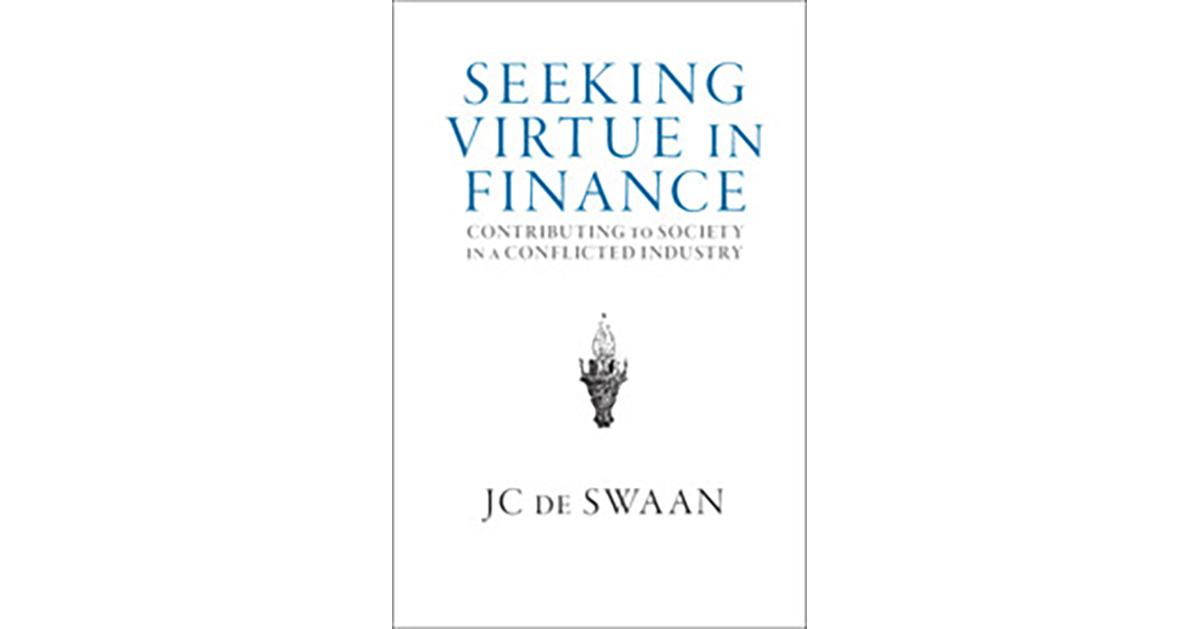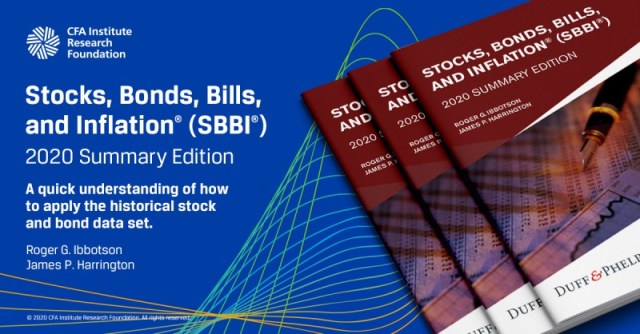[ad_1]
Seeking Virtue in Finance: Contributing to Society in a Conflicted Industry. 2020. J.C. de Swaan. Cambridge University Press.
J.C. de Swaan, an investment practitioner who teaches business ethics to Princeton undergraduates, has produced a field manual of genuine value to those fearing for their virtue in the moral minefield that is the modern finance industry. One is reminded of criminal defense attorney Alan Dershowitz’s famous admonition to his Harvard law students that, as most of them are bound for white-shoe corporate law, they are far more likely to need the services of a specialist in criminal law than to practice it.
The major benefit of Seeking Virtue in Finance is that it might just relieve many of its young readers of that necessity.
The book is compact and well written, weaving together three
broad areas: the familiar horror show of financial illegality and moral
corruption that makes the nation’s newspapers all too often; compelling and
uplifting narratives of practitioners who have lived exemplary professional
lives, sometimes at great cost to themselves; and finally, Socratic meditations
on the nature of private and public morality in multiple areas of finance.
The author provides clear and concise descriptions of the
usual malfeasance and scandals: extractive mutual fund and hedge fund fees; the
cynical disregard of compliance and risk-control departments at most large
institutions; more-localized misbehavior, such as the savaging of Valeant
Pharmaceuticals’ essential R&D budget and the price gouging of its
life-saving drugs; Goldman Sachs’s marketing of the Abacus collateralized debt
obligation (explicitly designed to blow up by hedge fund manager John Paulson)
to its other customers; and, of course, Bernie Madoff’s financial fraud and the
Arthur Andersen–Enron scandal. Along the way, de Swaan also describes abuses
that are less well known but equally egregious, particularly the dividend
recapitalizations deployed by private equity buccaneers to extract sorely
needed liquidity from perilously indebted companies.
The most compelling sections deal with practitioners whose self-abnegation humbles the reader. The best known among them are Jack Bogle and David Swensen, who, although more than financially comfortable, forwent far greater wealth in the pursuit of public virtue. But many of the practitioners will be unfamiliar, such as David Benes, who spent his entire career in Japan in the service of improving that nation’s awful corporate governance. In the process, he steadfastly refused to capitalize on his connections at the highest levels of the government. Benes currently lives in a modest house in an unfashionable Tokyo suburb. Another notable story is Alayne Fleischmann, a JP Morgan Chase mortgage analyst who blew the whistle on the company’s fraudulent mortgage originations, which made her so unemployable that she was forced to find work as a legal intern.
The most remarkable example of all is Eric Ben-Artzi, a Deutsche Bank risk analyst who exposed the company’s inflation of credit derivative valuations. He was eventually awarded several million dollars from the bank’s SEC settlement, but after paying off his attorneys and ex-wife, he refused the remainder on the grounds that the settlement money came from the shareholders and not from the managers who authored the malfeasance. Short of funds and, like Fleischmann, unemployable, he moved back to his native Israel.
In between the splendid and the vile, de Swaan deftly discourses on the gray areas and the trade-offs. How proper was it that George Soros cleared a US$1 billion profit from his 1992 bet against the British pound, whose fall most observers credit with reinvigorating the country’s economy? Is private equity a net plus or minus, both in terms of corporate performance and overall societal health? (Spoiler alert: Venture capital comes off somewhat better.) More generally, even if a practitioner executes their fiduciary responsibility to the client with the utmost rigor, should they consider the societal externalities of their craft? Or, on a more basic level, should not schoolteachers and nurses command more respect than finance professionals do?
As is typical of many academic publications, there were a few lapses in fact checking. One of John Bogle’s successors at Vanguard was William McNabb, not Frederick, and the author perpetuates the nearly de rigueur misspelling of Northern Pipe Line as “Northern Pipeline,” whose immense cash hoard Benjamin Graham made famous.
More seriously for a tome on corporate ethics, de Swaan, who worked at McKinsey & Company, praises the moral quality of McKinsey’s leadership but fails to mention its high-profile scandals, such as its enabling of South Africa’s larcenous Gupta family, its long client list of authoritarian despots, and its involvement with inhumane US Immigrations and Customs Enforcement deportation procedures (which it unsuccessfully tried to hide).
Finally, the book’s index is nearly useless. In future editions, I would suggest that the superb conclusion, which summarizes the book’s structure, should largely replace the current introduction, which is somewhat weak and overlong.
The book also features a major omission, which is perhaps intentional. Having described the industry’s ethical dangers and how to avoid them at the practitioner level, the author almost completely ignores just why, in the first place, these transgressions are endemic to the finance profession and what to do about them at a systemic level. This is a subject that Robert Shiller, for example, begins to approach in Finance and the Good Society. At a few points, de Swaan gets tantalizingly close to these questions, observing that “Professions that attract mission-driven individuals whose objective is primarily to serve society — think of public school teachers, nurses, and NGO employees, to name a few — tend to be associated with low levels of compensation.”
It is not difficult to tumble to the obverse of this statement — that finance tends to attract those who are not “mission-driven.” Collegiate economics majors, for example, donate less to charity than do other students; even worse, after non-economics majors take economics courses, they become less charitable. At another point, he notes that relatively low-paid areas, such as endowments and foundations, attract “individuals who are not predominantly motivated by building up the size of their net worth.” The author fails to take the obvious next step, which is to recognize that people do not go into finance for the same reasons that they become social workers, elementary school teachers, paratroopers, or foreign service professionals.
Finance, in short, suffers from a Willie Sutton problem. Consider, for example, the difference between the highest levels of journalism and finance, neither of which have mandatory credentialing of the sort seen in law, medicine, or accounting. The typical reporter at the New York Times, Wall Street Journal, or Economist labors under a strict code that mandates rigorous fact checking, fairness to investigative subjects, and protection of sources. The same depth of professional ethics does not apply at the nation’s top investment banks.
Why the difference between journalism and finance? In de Swaan’s lexicon, the former attracts those who are “mission-driven” toward intellectual curiosity and public service but certainly not toward monetary reward, whereas the latter attracts those who are “mission-driven” in the opposite direction. (Or, as pointed out by Wall Street Journal’s Jason Zweig, the former complicates simplicity whereas the latter simplifies complexity — so it’s no surprise which pays better.)
The author and his educational colleagues can infuse only so many of their students with the requisite moral fiber. Any significant reform of the ethical and legal morass that is modern finance may well require more-direct alterations in its compensation and regulatory structure. I would urge de Swaan to direct his impressive research and prose skills in that direction in a follow-up volume.
In the meantime, and despite the aforementioned minor flaws, I can highly recommend this volume to any and all practitioners attempting to navigate the industry’s treacherous ethical waters.
If you liked this post, don’t forget to subscribe to the Enterprising Investor.
All posts are the opinion of the author. As such, they should not be construed as investment advice, nor do the opinions expressed necessarily reflect the views of CFA Institute or the author’s employer.
[ad_2]
Image and article originally from blogs.cfainstitute.org. Read the original article here.




